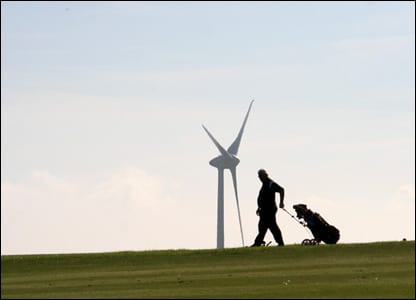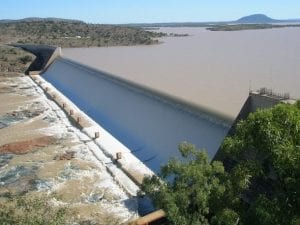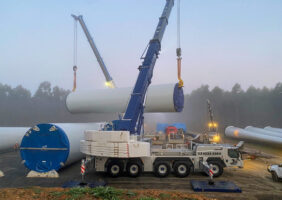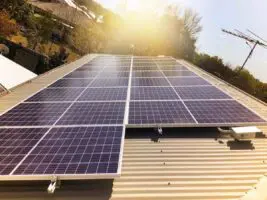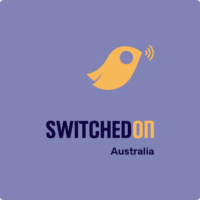It seems that the residents of King Island are being presented with what appears to be the most invidious choice – hosting a multi-billion dollar, 200 turbine wind farm, or preparing for an influx of up to 45,000 swingers (golfers, that is) in plus-fours and other doubtful clothing choices. Or they could choose both.
Each will have impacts on visual amenity and the local economy. But there is growing concern that they won’t get the opportunity to get their facts rights because it seems that Tasmania’s main electricity company is being outmanoeuvred by a small, but well-resourced group of anti-wind campaigners.
Hydro Tasmania was forced on Tuesday to make a public intervention in the debate over the mooted $2 billion wind farm – which is getting increasing national media and industry attention – after a local committee released what it claimed to be a thorough economic analysis of the impact of the project.
The analysis, prepared by CH2MHill, a large global consultancy group, suggested that the 200 turbine, 600MW wind farm would deliver less economic benefit than two mooted luxury golf courses over a 20-year period. The extent of that extra benefit depended on the “growth scenarios” of golfer numbers.
Hydro Tasmania rushed out a statement damning the report, including the fact that the study did not even entertain the possibility that a wind farm and the golf courses could go hand in hand. Hydro CEO Roy Adair accused the report of “crystal ball-gazing” and labeled some of the assumptions, such as the projections of up to 20,000 annual visitors at one golf course and 25,000 at the other, to be over optimistic.
“In our opinion the latest report includes figures that don’t appear to stack up. It also has some incorrect assumptions about TasWind and some very optimistic forecasts,” he said. The study, which can be found here, was also criticised for not considering the economic benefits of port upgrades and NBN access that would go with the wind farm, and for downplaying the numbers of full-time employees at the wind farm, once operating, and where they would live.
Adair’s intervention, however, betrays a growing concern that the TasWind proposal will not even get to first base – which was to be approval from the 1,500 or so islanders to go ahead with a $30 million feasibility study. A vote on that proposal will be held next week.
Hydro had hoped that a full-scale feasibility study would give careful analysis of the potential economic impacts and benefits, a study of where the wind farm could be located, and the potential impacts and benefits of that on the local community and businesses, including the mooted golf courses.
And, crucially, it would give time for careful reflection. As it is, emotions on the island are running hot. Pro-wind campaigners concede that the anti-wind faction has proven to be extremely resourceful, importing several noted anti-wind activists, hiring a Sydney PR firm well known for its support of controversial issues, and even taking control of social media (the King Island Facebook page is said to be administered by the anti-wind side).
It is clear that the tactics of the anti-wind group is to avoid further analysis and reflection, relying instead on a fear campaign about wind turbine syndrome. (The island has hosted several small turbines for many years and has had no documented complaints, until one mainland anti-wind campaigner arrived and complained on his first night of being overwhelmed by symptoms caused by a turbine 4kms away.)
The prospect of the islanders rejecting even a fact-finding mission and not looking at some of the options is exasperating some of the less-partisan members of the community, frustrated that decisions and positions were being taken on the first bits of information given to the islanders.
“We have an opportunity, the first of its kind in any community in Australia ever to negotiate terms, conditions and even other options that can benefit our island, our neighbor states, Australia as a whole and be an example … in the renewable energy future the rest of the globe is embracing,” one said.
The details of what is happening on King Island probably appear quite provincial to outsiders, but it is exactly the dynamic that developers of wind farm projects can encounter in local communities, and the wind energy industry is looking on with concern. Not because a no-vote in King Island would have direct consequences on other projects, but it would be a hugely symbolic victory for the anti-wind movement.
As it is, the wind energy industry faces uncertainty enough for even approved projects because of concerns about the future of the renewable energy target – which means that utilities are not signing contracts and banks are not financing – and the growing anti-renewables positioning of many in the Coalition, soon to be in government.
Adair said Hydro Tasmania strongly believed that if a feasibility study was not undertaken, neither the business nor the King Island community would have a full understanding of the project, its benefits and its risks to support a good decision-making process.
Hydro Tasmania will conduct a survey of the King Island community’s views on whether or not the project should proceed to feasibility from June 7-17. It will be done independently of Hydro Tasmania by EMRS with the results expected to be known shortly after.

